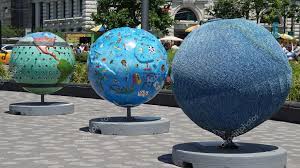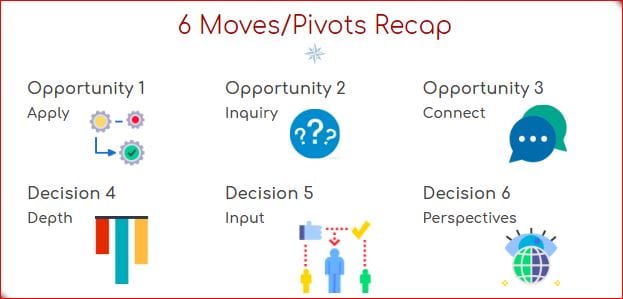The NCHE Annual Conference was hosted in Washington DC this year. It was a beautiful weekend ahead of the  famed blossoming of the cherry trees in the city predicted to adorn the city in early April.
famed blossoming of the cherry trees in the city predicted to adorn the city in early April.
(Did you know that it is the Yoshino tree’s single white blossoms that create an effect of white clouds around the Tidal Basin and north onto the grounds of the Washington Monument. Intermingled with the Yoshino are a small number of Akebono cherry trees, which bloom at the same time as the Yoshino and produce single, pale-pink blossoms…)
Ok, back to the conference.
I had the honor of being part of a panel for a three hour workshop for 26 participants from a range of fields. Together with three outstanding historians and educators (see below and bios here) we shared insights and practices regarding the challenges and opportunities of teaching and learning world history.
- Bob Bain, University of Michigan
- Heather Streets-Salter, Northeastern University
- Molly Warsh, University of Pittsburgh
Below, I have outlined my panel segment which summarized 6 moves/pivots our social studies program has been emphasizing and supporting for the last 7 years at Fairfax County Public Schools. For your reference the slide deck I used can be accessed here.
As it is just a slide deck, I am happy to clarify any part of the presentation. Just post a comment or email me directly at craigperrier19@gmail.com Enjoy!
Opportunities
Overview: When teaching world history, teachers and teams have multiple chances to make the class engaging, relevant, and student centered. These opportunities uses the content of the class to support student skills and dispositions beyond the classroom. As with the other heading below, these moves will provide the best dynamic  experiences for students when the team of teachers are professional collaborators.
experiences for students when the team of teachers are professional collaborators.
- Move/Pivot 1: Apply knowledge used in history to understand the present and develop students’ world views.
- Move/Pivot 2: Use inquiry to develop disciplinary literacy with students so that they can construct their understanding and meaning of the past.
- Move/Pivot 3: Connect students with other students beyond your school.
Decisions
Overview: The amount of content in world history course, as you can imagine, is extensive (and arguably limitless). These moves require intentional course planning while developing teachers’ craft. Ultimately each decision is on a  continuum that meets teachers/teams where they are with rooms to innovate when the time is right.
continuum that meets teachers/teams where they are with rooms to innovate when the time is right.
- Move/Pivot 4: When should we take deep dives during the survey course?
- Move/Pivot 5: What level of student input and autonomy is used?
- Move/Pivot 6: Whose perspectives should we include?
In addition I do urge you to consider exploring the over 100 federally funded National Resource Centers (NRC) housed at universities across the USA. The goal of the NRC are to “support instruction in fields needed to provide full understanding of areas, regions or countries; research and training in international studies …instruction and research on issues in world affairs. and outreach programs to K-12 and post-secondary institutions, and the public at large.” NRC have been valuable partners as resource providers and supporters of teachers’ content understanding.
You can locate the NRC currently funded on their website. A screenshot of the interactive map is provided below.



Thank you, very useful, continue posting like this
https://printer-brotherdrivers.com/brother-dcp/